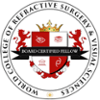Optometrist Emma Enjoys Mountain Views After Laser Eye Surgery
It is five years since optometrist Emma Brandon had her extreme short sightedness corrected and her husband is also a London Vision Clinic patient.
“On the mountain, we both said to each other that we couldn’t imagine what the experience would have been like with glasses or contacts – the views on the way up were absolutely stunning – we couldn’t imagine not being able to enjoy them properly.”…


